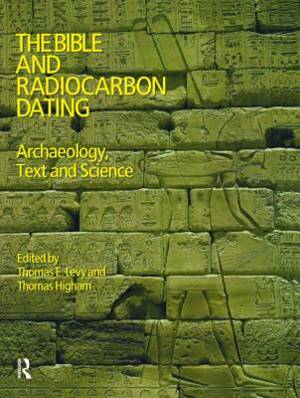
- Afhalen na 1 uur in een winkel met voorraad
- Gratis thuislevering in België vanaf € 30
- Ruim aanbod met 7 miljoen producten
- Afhalen na 1 uur in een winkel met voorraad
- Gratis thuislevering in België vanaf € 30
- Ruim aanbod met 7 miljoen producten
Zoeken
The Bible and Radiocarbon Dating
Archaeology, Text and Science
Thomas Levy, Thomas Higham
Hardcover | Engels
€ 175,95
+ 351 punten
Uitvoering
Omschrijving
Over the past several years, a number of Levantine archaeologists working on the Iron Age (ca. 1200 - 586 BCE) have begun to employ high precision radiocarbon dating to solve a wide range of chronological, historical and social issues. The incorporation of high precision radiocarbon dating methods and statistical modelling into the archaeological 'tool box' of the 'Biblical archaeologist' is revolutionizing the field. In fact, Biblical archaeology is leading the field of world archaeology in how archaeologists must deal with history, historical texts, and material culture. A great deal of debate has been generated by this new research direction in southern Levantine (Israel, Jordan, Palestinian territories, southern Lebanon & Syria, the Sinai) archaeology. This book takes the pulse of how archaeology, science-based research methods and the Bible interface at the beginning of the 21st century and brings together a leading team of archaeologists, Egyptologists, Biblical scholars, radiocarbon dating specialists and other researchers who have embraced radiocarbon dating as a significant tool to test hypotheses concerning the historicity of aspects of the Old Testament or Hebrew Bible. As this book "raises the bar" in how archaeologists tackle historical issues as manifest in the interplay between the archaeological record and text, its interest will go well beyond the 'Holy Land.'
Specificaties
Betrokkenen
- Auteur(s):
- Uitgeverij:
Inhoud
- Aantal bladzijden:
- 464
- Taal:
- Engels
Eigenschappen
- Productcode (EAN):
- 9781845530563
- Verschijningsdatum:
- 1/10/2005
- Uitvoering:
- Hardcover
- Formaat:
- Ongenaaid / garenloos gebonden
- Afmetingen:
- 191 mm x 253 mm
- Gewicht:
- 1143 g

Alleen bij Standaard Boekhandel
+ 351 punten op je klantenkaart van Standaard Boekhandel
Beoordelingen
We publiceren alleen reviews die voldoen aan de voorwaarden voor reviews. Bekijk onze voorwaarden voor reviews.











